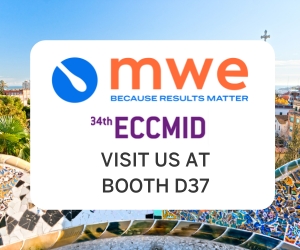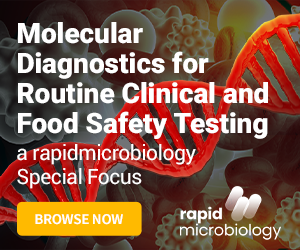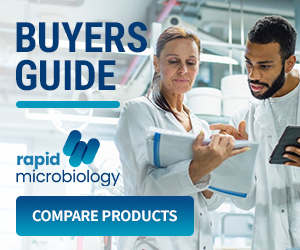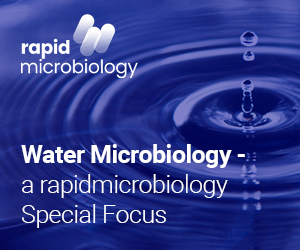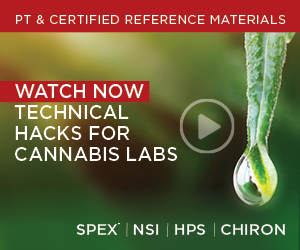Swabs - Capture, Maintain and Release!
Key Points
- Efficient collection and release of microorganisms
- Preserve the microbiological population from sampling to the bench
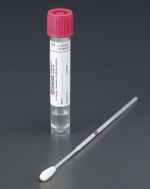 Introduction: Samples can arrive at the microbiology laboratory in a variety of formats, often sub-samples of a large production batch or in a clinical setting, samples of body fluids. Swabs however, are unique in their presentation, as the target microorganisms need to have been efficiently collected from the sampling site, carried by an inert vector and then must be recovered from this for subsequent analysis.
Introduction: Samples can arrive at the microbiology laboratory in a variety of formats, often sub-samples of a large production batch or in a clinical setting, samples of body fluids. Swabs however, are unique in their presentation, as the target microorganisms need to have been efficiently collected from the sampling site, carried by an inert vector and then must be recovered from this for subsequent analysis.
Samples of microorganisms collected by swabbing will invariably have been subjected to a cleaning regime or antibiotic treatment designed to reduce or eliminate their presence. Therefore the numbers of cells present may be very small and they will likely be under some stress.
Taken from their original ecological niche, to which they had become adapted, and subjected to some process; physical, chemical, biological, or all three, they will either be killed or they will adapt and survive. The former outcome is ultimately that desired by the processor or clinician. The latter presents a risk to subsequent procedures within the processing environment or to clinical outcome.
During transportation of the swab, the numbers and proportions of micro-organisms present should be the same when it arrives at the lab as they were when first sampled. Swab transport systems should be able to keep the more delicate and fastidious bacteria viable whilst preventing the more robust ones from multiplying and obscuring others. With the increasing use of immunological and molecular testing techniques, even more, is required of the transport medium: it must maintain cellular material and not interfere with the diagnostic test used. And also, when centralised testing facilities are used, the time from sampling to bench is extended. Making the choice of swab and transport medium more important than ever before.
So swabbing techniques, and the swabs themselves, need to provide an efficient collection of sample, its subsequent preservation, and ultimately the release of the target cells. In 2003 the Clinical Laboratory Standards Institute (CLSI) published M40-A , an approved standard for the quality control of microbiological transport systems, this meant that for the first time swab products could be compared and evaluated using set criteria.
Swabs for Wuhan Coronavirus/SARS-Cov-2/COVID-19:
1. Swabs: Based on CDC guidelines for clinical specimens, swabs with synthetic fibers and plastic shafts should be used for nasopharyngeal collections when 2019-nCoV is suspected. It's important not to use calcium alginate swabs or those with wooden shafts as they may contain materials that interfere with test results. For upper respiratory specimens, the CDC is recommending nasopharyngeal washes/aspirates, nasal aspirates or to collect both a nasopharyngeal swab AND an oropharyngeal swab made of synthetic fibre with plastic applicators. Once the specimens are collected, it is recommended that the swabs are placed in 2-3 ml of viral transport media. Suppliers of these swabs are listed in tables below.
2. Transport medium: If COVID-19 diagnostic kit manufacturers are applying for emergency use authorization (EUA) they should use Longhorn's PrimerStore MTM® as the viral transport medium and declare this on the application; this will allow the kits to be used in CLIA labs while the EUA is in process, the FDA has said.
Currently, Covid-19 assays approved for EUA with viral transport medium must be run in Biosafety level (BSL) 3 or 4 laboratories. However, the PrimerStore MTM sample collection device developed by Longhorn Vaccines and Diagnostics deactivates pathogens at the point of collection, stabilizes RNA and DNA and does not require special containment facilities, normally needed to deactivate the virus. This allows samples to be run in BSL 1 & 2 laboratories: Please see here for extra information regarding this product: https://www.rapidmicrobiology.com/news/fda-places-trust-in-longhorn39s-viral-transport-medium
Technology & Applications (General):
Disposable, single-use plastics revolutionized the microbiology laboratory, lending themselves particularly to the testing of surfaces or inaccessible areas of equipment and to the collection of cellular samples from epithelial surfaces.
Traditionally the swab would comprise a flexible shaft terminating in a bud of compacted material, e.g. cotton, viscose, contained within a pre-labelled, tamper-evident tube. The tube may also contain a transport medium designed to maintain the viability of any organisms collected.
There is a wide range of transport media available e.g. Amies Stuart, Cary-Blair and Universal Transport Medium (UTM), these are intended to maintain the viability of any cells present until the swab is returned to the laboratory. In environmental sampling, transport media may contain neutralizers to conteract any antimicrobial compounds that may have been transferred to the swab from the surface under test.
Swab designs have evolved to accommodate a range of applications. ATP-free swabs were developed to facilitate the technique in non microbiological hygiene tests. RNase and DNase free swabs allowed better recovery of nucleic acids for forensic molecular techniques and PCR work. Presentation also developed to include multi-layer packaging with VHP resistance for pharmaceutical cleanrooms.
Swabs with sponge/foam heads are widely used for industrial applications. These are often pre-moistened with media for improved recovery and can be used for pre-enrichment and incubation within the transport tube, commonly presented as Swab Rinse Kits (SRK).
The most recent innovation has addressed the fundamental weakness in the design of swabs, i.e. release of collected sample. There is a recognition within the microbiological community that compacted, woven swab tips can retain too much of the collected sample. This would impact on the validity of quantitative data reported in cases where the sample was collected by swab, especially where the sample size would be known to be small, e.g. ATP and some clinical infections.
Typically between 30%-50% of the collected sample would be released by traditional swabs.
The new nylon flocked swab design has oriented strands of nylon arranged perpendicular to the shaft creating micro-capillaries that not only improve sample collection but also release that sample more efficiently. Figures above 90% have been reported.
With release efficiencies at this level the swab technique can now take its place among the truly quantitative analytical techniques and together with the use of liquid transport media, swab samples can now be processed using fully automated instrumentation.
Comments
Sample release efficiencies (>90%) allow truly quantitative results. Strengthening trending data, and allowing meaningful spot checks for hygiene applications.
Better sample collection efficiencies mean less invasive clinical applications.
Better reproducibility for low target sample environments, e.g. pharma applications.
Automated processing of swabs allows better laboratory productivity.
Get the latest updates in Rapid Microbiological Test Methods sent to your email? Subscribe to the free rapidmicrobiology eNewsletter


